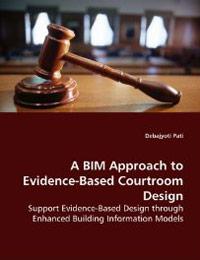A BIM Approach to Evidence-Based Courtroom Design: Support Evidence-Based Design through Enhanced Building Information Models

Over the past decade evidence-based design (EBD) has emerged as a novel approach to design decision-making, promising a structured approach to address key organizational objectives. Issues pertaining to appropriate representations of evidences, however, are still being examined. Moreover, an important source of data – buildings-in-use data – is not being tapped owing to several technical and methodological impediments. Advances in conceptual data modeling offer a unique strategy to interface post-occupancy evaluation (POE) data with design decision-making. This book reports the use of EXPRESS modeling language to develop a conceptual data structure for POE data, and integrate POE data with as-built building descriptions. While emphasizing an improved way to structure buildings-in-use data to support EBD, this work also constitutes an extension of ISO-STEP. Actual performance data from 26 trial courtrooms is used in this book to illustrate a range of decision support scenarios in courtroom design. This book should be of particular interest to academics and professionals in the domains of building information modeling, justice design, workplace design, and evidence-based design.


Add comment
Log in to post comments